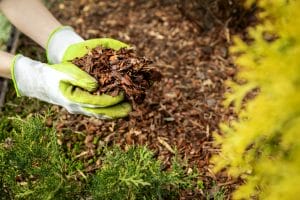HOW TO ENSURE YOUR TREE DOESN’T COME BACK TO HAUNT YOU AFTER REMOVAL
If a tree threatens the foundations of your home or has become so large that it poses a threat in stormy weather, you should probably have it removed. You can always replace it with something more manageable in future. However, some tree species are notorious for suckering when damaged or even when removed.
This is a natural act of self-preservation. Once a tree is damaged in some way or has been removed, its roots send out suckers in order to create new growth. When removing a tree, unless you address this issue quickly, your lawn, driveway and vegetable patch may be ruined by a never-ending plague of suckers.
Some Trees Are Worse Than Others
Before you spend money on hiring a tree service to remove a tree, you should create a plan of attack to deal with suckers. First, you should correctly identify the tree you plan to remove. Some species are far worse than others in regards to suckering after removal, so it helps to know beforehand if suckering will become an issue with your tree.
The following trees are known to sucker heavily after removal:
- Aspen
- American sweetgum
- Black locust (Robinia pseudoacacia)
- Chokecherry
- Dogwoods
- Empress tree
- Honey locust
- Sweetfern
- Tree of Heaven
- Yellowroot
This is, however, not an exhaustive list. If you are unsure of the species of your tree, hire an arborist or tree specialist to identify the tree before cutting it down. If your tree is likely to swamp the area in suckers post-removal, you then need to decide how best to deal with this issue.
You Can Choose a Physical Method
This method can be tiring if you choose to do it yourself. But it will also help you to free up the ground where the tree was planted so you can, for example, build a swimming pool on the site. Once the tree has been removed, you can either hire a stump grinder to remove the stump or have the tree removal service do it for you.
What is most important here is that you remove the roots of the tree. Once the stump has been ground out, dig out the roots. You may not be able to locate and remove every single root, but you should ensure that you remove the larger roots. Use a pruning saw and lopping shears as you go to cut the roots into manageable pieces. This method is tiring but effective.
You Can Apply Chemicals to the Stump
If you don’t plan to use the land the tree is on any time soon, then this chemical method is probably more suitable. Once the tree has been cut down, you or a tree specialist should apply some herbicide to the freshly cut stump, preferably within an hour.
Since trees transport nutrients and water via the cambium layer, the inner layer closest to the bark of a tree, ensure that this area is adequately coated with herbicide. Within around two to four weeks, the tree stump and its roots should have fully absorbed the herbicide.
A Tree Service Can Chemically Treat Your Tree
Since herbicides that contain triclopyr amine or glyphosate can be harmful to you and your pets as well as the other plants and trees in your garden, you should hire a tree service to apply the herbicide. Within a year, the stump and the roots will be dead. However, be prepared to prune any suckers that appear before the roots die off completely.
If you are planning to remove a tree that is bothering you, hire a tree service to make sure the job is done well and more important, safely. With their expertise in various services like palm tree removal, tree lopping, stump grinding, trimming, and more, our crew members are ready to tackle any tree-related challenge you may have.



